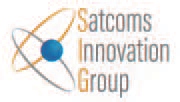Toward the early part of last year, we hosted an online discussion with members of the Satcoms Innovation Group (SIG) about the Flat Panel Antenna (FPA) market. What came out of that discussion was that the industry is facing a real problem with these products.

Image is courtesy of Northern Sky Research (NSR). Information regarding their latest 5th Edition of Flat Panel Satellite Antennas Analyhsis and Report is available at this direct link...
On the one hand, flat panel antennas have the potential to totally revolutionize Comms-On-The-Move (COTM). On the other hand, very few meet the high-performance expectations of the industry and often leave users disappointed with their service. That led to some interesting discussions where we posed the question: How do we solve it?

Understanding the Challenge
Having discussed this topic extensively with a number of satellite operators, it is clear that we are facing some fundamental challenges that need to be addressed:
1. So far, flat panel antennas have not met the cost and performance requirements of satellite operators.
2. Customer expectations are high and occasionally not realistic — this leads to disappointment with service levels.
3. Clarification is needed as to which performance data satellite operators require — different operators have different requirements.
4. Testing is costly and complex.
SIG and SOMAP
The challenge that is currently being faced is similar to the challenge that led to the initial foundation of the GVF Satellite Operators Minimum Antenna Performance (SOMAP) group. The group was established to find a way to standardize requirements antenna performance. This involved close cooperation between a number of global operators and the results have been positive for the entire industry:
• Manufacturers know that meeting SOMAP performance requirements will satisfy most operators, with only minimal extra tests required from some.
• Operators can greatly reduce time taken to test and approve antennas and even share that workload between them to some extent. If another operator has already tested to SOMAP requirements, they can be confident it meets those conditions.
• Users benefit from a reliable service.
It seems logical that replicating that same approach for the flat panel antenna market would be beneficial for all. We, therefore, instigated discussions with SOMAP to see just how this could be achieved.
How Do We Move Forward?
This has been such a challenging topic that at the beginning of these discussions, we even considered the question of whether satellite operators should stop investing in flat panel antennas all together and put their time, energy, and money, into other areas of development.
If these devices cannot meet the necessary performance requirements, that is likely to be the next outcome. However, we all recognize just now valuable the correct equipment could be for the entire industry, especially for COTM and enabling next generation media services.
When SOMAP was first formed, the organization’s main challenge was to agree on a standard set of requirements that all operators would be happy with instituting. With so many varying expectations, that was not a simple task and I’m certain this will again be the challenge. That said, SOMAP has already laid the foundation for that type of activity and we can hopefully reach an agreement far more easily. Together, with SOMAP, we are looking to accomplish a number of criteria to drive this topic forward:
• Engage with manufacturers to better understand their challenges, as well as communicating the requirements from the satellite operators.
• Spearhead discussions between operators to determine commonality when it comes to data required.
• Investigate new ways to test these antennas efficiently while ensuring an accurate picture of performance
Engaging with Manufacturers
We are currently at the start of what will likely be a long journey. However, this is an important route to follow and input from manufacturers will be crucial. They know better than anyone the process for testing and providing data to the operators — they also know which data is critical as well as which data is perhaps less relevant to the soliution. Having a clear set of recommendations from manufacturers will give all a solid starting point for the operator discussions.
We have started the outreach to flat panel antenna manufacturers. If any others wish to get involved, they can, of course, contact me at helen@satig.space.
Spearheading Operator Discussions
Once the input has beemn received from enough manufacturers, the time will arrive for the operators to discuss their requirements, methods and data formats. That will involve the challenging task of finding some commonality between them, as well as against the recommendations from the manufacturer. This will enable all to build a common set of requirements that all operators will be happy with instituting and that will also work for the manufacturers.
Investigating New Testing Methods
Testing requires the investment of a huge amount of time and is fraught with any number of challenges. Most existing test facilities are setup for traditional antennas; however, flat panel antennas cannot be measured using the same procedures.
FPAs have dynamic radiation patterns across the surface of the antenna that changes as the direction of the boresight changes. Testing is further complicated by the fact that these antennas often offer multi-beam, multi-band, and multi-orbit operations.

Once we reach some form of alignment, we then need to establish reliable and repeatable measurement techniques that are unique to these product genres. Work has already started looking at some of these options.

The Future of FPAs
The ultimate end goal is one that will assist the entire satellite industry. FPAs have the potential to disrupt the COTM market, as long as the performance exists. With NSR forecasting cumulative FPA equipment sales to reach approx. $11 billion by 2028, clearly we need to work together to ensure the industry can reap the benefits of these advanced devices.
satig.space
Author Helen Weedon is the Managing Director of the Satcoms Innovation Group (SIG).

